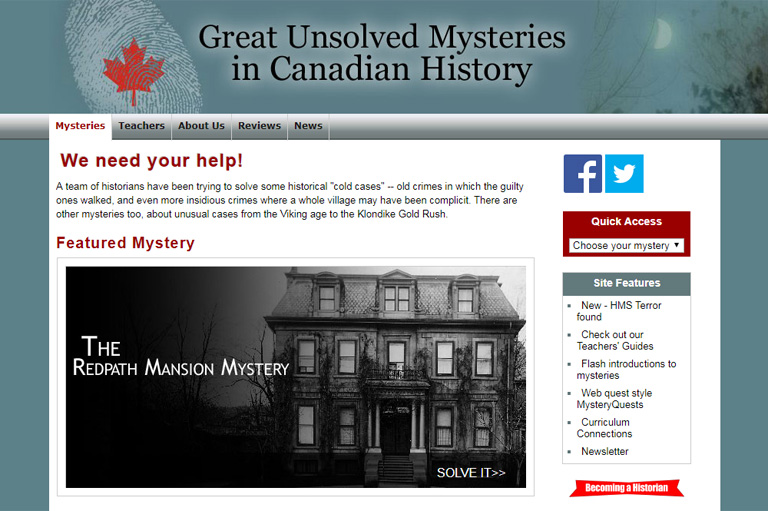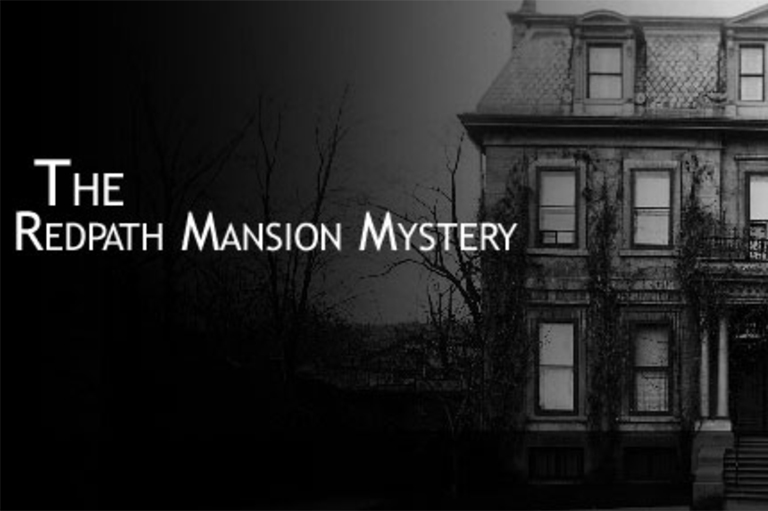Great Unsolved Mysteries in Canadian History

Victoria (British Columbia)
In 2008, the group behind the Great Unsolved Mysteries in Canadian History Project won for their critical-thinking tool in the form of historical "cold cases." Launched in 1997 for Canadian secondary-school students, the site has become a major force in online education, but is also a fascinating exploration for the armchair sleuth.
Throughout the fourteen-year history of the award, many of Canada’s leading writers and broadcasters have been lauded for their efforts in bringing Canadian history to the forefront of their medium. This year’s recipient signals a new era and approach, by recognizing the efforts of the Great Unsolved Mysteries in Canadian History website — an innovative web-based series of mystery puzzles. Designed principally for use by schools, the website is quickly growing a wide audience in Canada and around the world.
The Project consists of a series of twelve mystery websites designed to help students think critically about historical evidence surrounding a particular event in Canadian history.
Written as a series of clues rather than a linear narrative, each mystery presents actual historical and archaeological research inviting students to draw their own informed conclusions from documents or artifacts ranging from diaries, inquests, photos, maps, and newspapers. Each mystery website is constructed by a team of some thirty specialists including historians, archaeologists, teachers, and graphic designers from universities across Canada.
The scope of the project is wide, covering mysteries from all regions, time periods as early as 1000 AD to the 1950s, and broad themes such as exploration, slavery, violence, natives, and art. Participants can investigate such questions as: How did artist Tom Thomson die in Ontario’s Algonquin Park in 1917? Where is Vinland? Who discovered gold in the Klondike in 1896?
The Great Unsolved Mysteries in Canadian History Project is based at the University of Victoria, and co-directed by three eminent professors of Canadian history: Peter Gossage of the Université de Sherbrooke, John Lutz of the University of Victoria, and Ruth Sandwell of the Ontario Institute for Studies in Education, University of Toronto.
With funding from the Department of Canadian Heritage's Canadian Culture Online Program, each website is bilingual with translation provided by the Université de Sherbrooke. Conscious of teacher and classroom needs, the Project has worked with the Critical Consortium (based at the University of British Columbia) and the Ontario Institute for Studies in Education, University of Toronto, to develop educational materials.
The Great Unsolved Mysteries Project offers students the chance to use exciting new technologies to explore intriguing mysteries, while opening primary sources, the mainstay of academic research, to general users. Its success is proven by its rising use in Canadian classrooms and by the tens of thousands of hits it has registered from around the world.
More about Great Unsolved Mysteries
Advertisement






